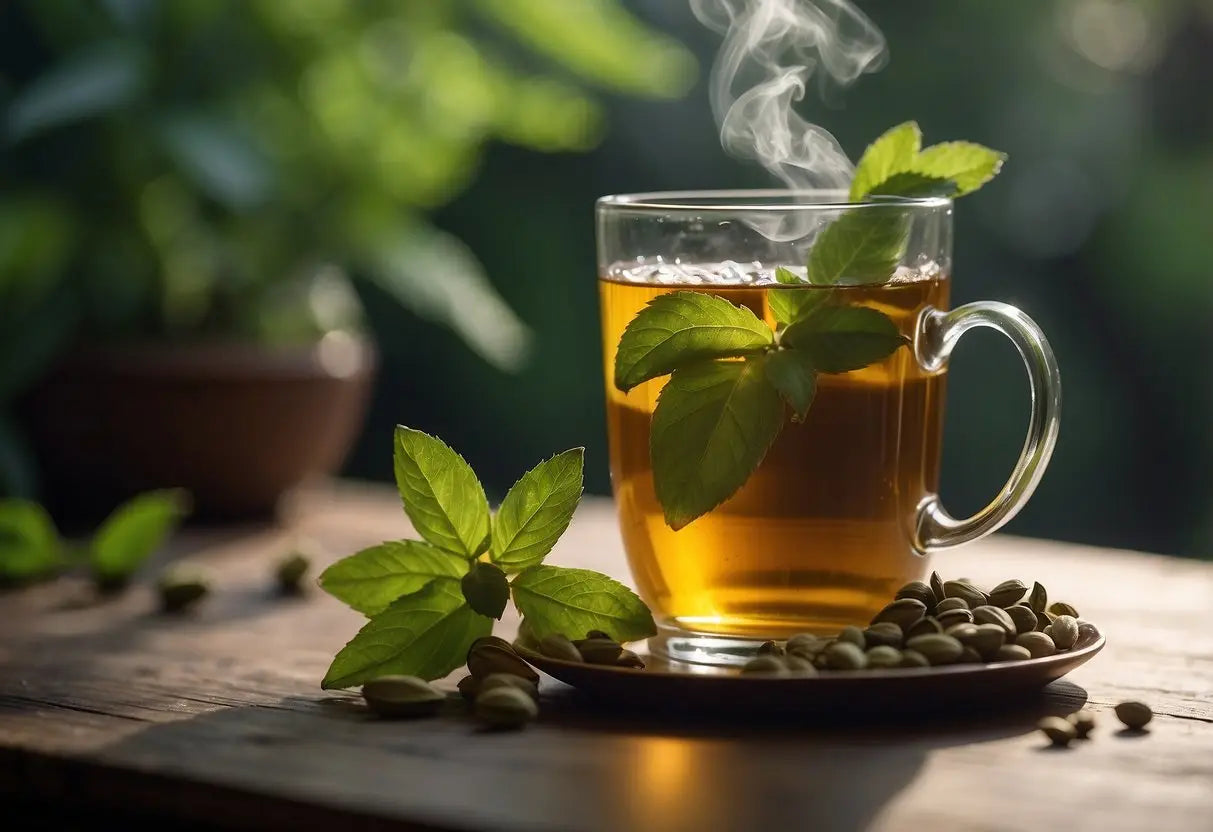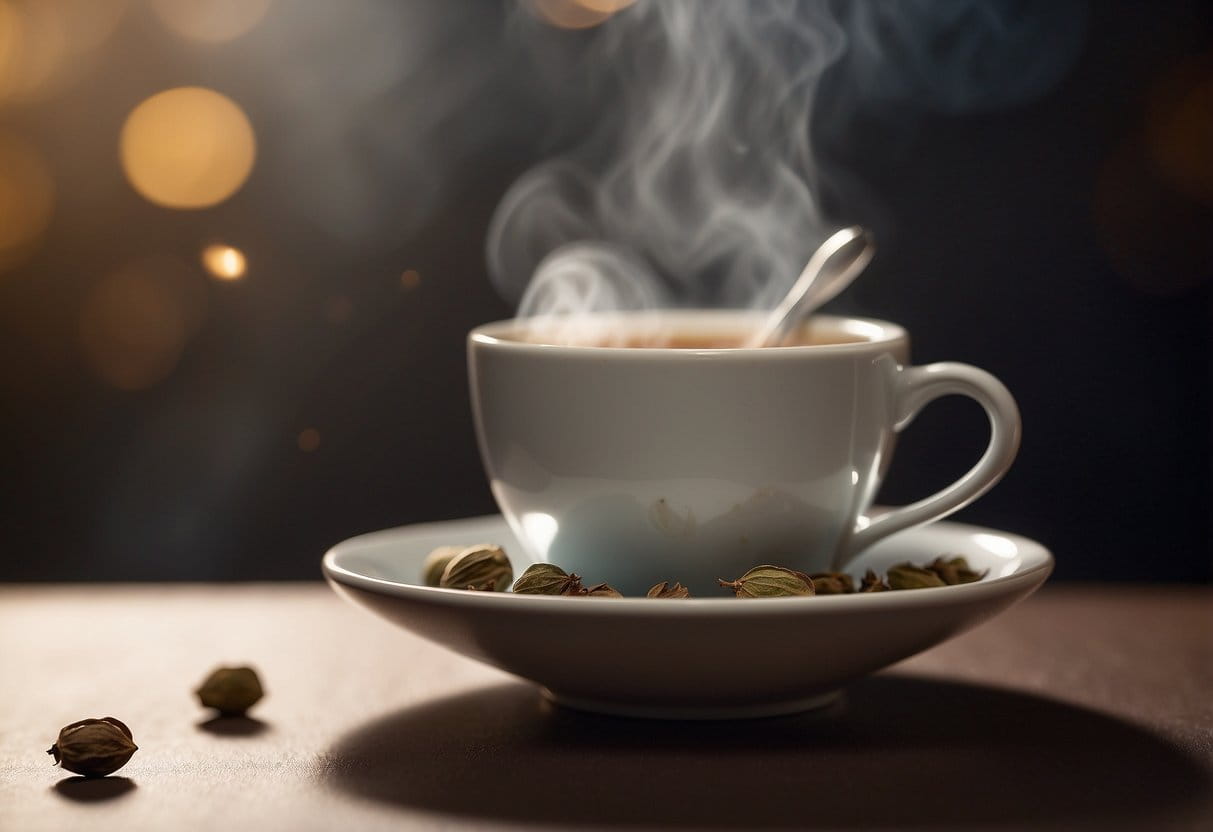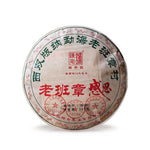Cardamom Tea
Cardamom tea is a traditional beverage known for its distinctive flavor and potential health benefits. It’s made by brewing cardamom pods or ground cardamom seeds, often combined with other spices like ginger or cinnamon.
Ingredients Used
- Cardamom Pods/Seeds
- Water
- Optional: Black tea leaves, ginger, cinnamon, honey
Brewing Process
- Boil Water: Start by bringing water to a boil.
- Add Ingredients: Add cardamom and any other chosen spices.
- Steep: Let the mixture steep for 5-10 minutes.
- Strain: Strain the tea into cups and serve hot.
Flavor Profile
Cardamom tea has a warm, spicy, and slightly sweet flavor. The aroma is aromatic with hints of citrus and floral undertones.
Health Benefits
- Digestive Aid: May help in easing digestive issues.
- Anti-inflammatory: Contains compounds that can reduce inflammation.
- Antioxidant-rich: Helps in combating oxidative stress.
Serving Suggestions
You can enjoy cardamom tea either plain or with a touch of honey or milk. It pairs well with light snacks and desserts, enhancing their flavors.
Bestsellers
Various Recipes
Experiment with various recipes to find your preferred blend. Some popular variations include adding black tea for a stronger taste or incorporating honey for a natural sweetness.
Historical Significance
Cardamom tea has deep roots in ancient cultures. In India, it has been cherished for centuries, prominently featured in Ayurvedic practices.
In the Middle East, cardamom tea symbolizes hospitality and is often offered to guests. It plays a role in social rituals, reflecting the region's rich history.
In Scandinavia, cardamom arrived through trade routes and became popular in both beverages and baked goods. Its use reflects the blend of exotic spices in European traditions.
Ancient texts and traditional recipes consistently highlight the importance of cardamom, emphasizing its long-standing cultural impact.
Health Benefits

Cardamom tea offers a range of health benefits, aiding digestion, supporting respiratory health, promoting cardiovascular function, and providing antioxidant properties.
Digestive Health
Cardamom tea aids in easing digestive discomfort. It contains compounds that stimulate the secretion of bile acid in the stomach, which helps break down food more effectively. You might find it beneficial for alleviating bloating and gas.
Additionally, cardamom's natural carminative properties reduce the likelihood of ulcers and gastrointestinal disorders. Drinking cardamom tea after a meal can thus support better digestion and general gut health.
Respiratory Health
Inhaling the steam from hot cardamom tea may help you breathe easier by opening up your airways. It contains cineole, an active compound that acts as an expectorant, aiding in the clearance of mucus.
Cardamom tea can be a soothing remedy if you suffer from a persistent cough or respiratory infections. Its anti-inflammatory properties contribute to reducing irritation in your respiratory tract.
Cardiovascular Health
Including cardamom tea in your routine may support heart health. The antioxidants in cardamom help reduce high blood pressure, a significant risk factor for heart disease. It also promotes improved blood circulation.
Lao Ban Zhang
Potassium and magnesium in cardamom play a crucial role in maintaining heart rhythm and preventing blood clots. Regular intake can thus contribute to better cardiovascular function.
Antioxidant Properties
Cardamom tea is rich in antioxidants like flavonoids and polyphenols. These antioxidants neutralize harmful free radicals in your body, reducing oxidative stress and cell damage.
This can help protect against chronic diseases and support overall cell health. Adding cardamom tea to your diet can thus be a simple way to boost your antioxidant intake.
Ingredients and Preparation

Cardamom tea requires specific ingredients and preparation methods to achieve its characteristic flavor. Understanding the types of cardamom used, various brewing methods, and possible additional spices can enhance your tea experience.
Types of Cardamom
Cardamom comes in two main varieties: green cardamom and black cardamom.
Green cardamom is more common and offers a sweet, floral flavor. It’s typically used in beverages and desserts. On the other hand, black cardamom has a smoky, earthy taste, often preferred in savory dishes.
Each type affects the overall taste profile of your tea. Choose green cardamom for a more traditional, fragrant brew. Use black cardamom if you seek a more robust, deeper flavor.
Brewing Methods
Brewing cardamom tea can be done in several ways:
-
Stovetop Method: Crush 2-3 cardamom pods and add to boiling water. Allow it to simmer for 5-10 minutes. Add tea leaves or bags and steep for another 3-5 minutes. Strain and serve.
-
Quick Brew: Use ground cardamom or cardamom powder. Add 1/2 teaspoon directly to your tea infuser with tea leaves. Pour boiling water over and steep for 3-5 minutes. Strain and enjoy.
-
Traditional Brewing: In a teapot, combine crushed cardamom pods with tea and boiling water. Let it steep for 4-6 minutes. Strain before serving.
Additional Spices and Variations
To enhance your cardamom tea, consider adding spices such as cinnamon, ginger, cloves, or fennel seeds. These spices create a more complex flavor profile.
You can also vary the base tea used:
- Black Tea: Offers a strong, bold taste.
- Green Tea: Provides a lighter, more refreshing flavor.
- Herbal Tea: Perfect for caffeine-free options and other health benefits.
Sweeteners like honey, sugar, or agave syrup can be added for sweetness. Milk or cream can also be incorporated to create a richer, smoother texture.
Experiment with proportions to find the balance that suits your taste preferences.
Culinary Uses
Cardamom tea is not just for drinking; it can enhance various dishes.
Savory Dishes
- You can add cardamom tea to soups and stews to infuse them with a mild, aromatic flavor.
- Rice dishes, such as biryanis, benefit from the warm, spicy note of cardamom.
- Marinating meats with cardamom tea adds depth and complexity.
Sweet Treats
- Incorporate cardamom tea into your baking recipes. Cakes, cookies, and pastries gain an exotic touch.
- Preparing syrups with cardamom tea for desserts like baklava or dumplings adds a unique twist.
- Cardamom tea ice cream or custards create a refreshingly different dessert.
Beverages
- You can create flavored lattes or iced beverages by infusing milk with cardamom tea.
- Herbal tea blends with cardamom can be comforting and aromatic.
- Smoothies with cardamom tea offer a warm flavor mixed with fruits.
Tips for Use
- Use freshly brewed cardamom tea for the best flavor experience.
- Pairing: Cardamom complements flavors like cinnamon, ginger, honey, and citrus.
- Dosage: Start with a small amount to avoid overpowering your dish.
By incorporating cardamom tea into your culinary endeavors, you'll find an array of exciting flavors and aromas that can elevate your cooking to new heights.
Cultural Practices
Cardamom tea has deep roots in various cultures, especially in South Asia and the Middle East. You might find it served in homes, during festivals, and even in local tea shops.
In India, cardamom tea, or " elaichi chai," is a popular beverage enjoyed with snacks. You might prepare it by boiling tea leaves, milk, sugar, and crushed cardamom pods.
In Arab countries, cardamom tea is often served as a gesture of hospitality. When you visit someone’s home, expect to be offered a cup as a symbol of welcome.
The Scandinavian countries also cherish cardamom in their beverages. You may come across " cardamom-infused black tea," a staple in many Nordic homes.
- Boiling: You boil tea leaves with ground cardamom or whole pods.
- Infusion: You steep crushed cardamom seeds in hot water and mix with tea.
Tips for Authentic Flavor:
- Fresh Pods: Always use fresh cardamom pods for the best aroma.
- Crushing: Gently crush the pods to release the oils before brewing.
- Combining Spices: You can combine with cinnamon or ginger for a richer taste.
Enjoyment: Remember, cardamom tea is not just a drink, but a cultural experience connecting you to various traditions around the globe.
Selection and Storage
To enjoy the best cardamom tea, it's important to choose quality cardamom and store it properly to maintain its flavor and aroma.
Choosing Quality Cardamom
When selecting cardamom, opt for whole pods rather than ground cardamom. Whole pods retain flavor longer. The pods should be green and plump. Avoid pods that are pale, shriveled, or have visible signs of mold. If possible, buy from reputable sources known for fresh and high-quality spices.
Pay attention to the scent. Cardamom should have a strong, sweet, and slightly spicy aroma. If the scent is weak or musty, the cardamom is likely old and less potent. Additionally, consider buying organic cardamom, which is more likely to be free of pesticides and other chemicals.
Storage Tips
Proper storage ensures that your cardamom retains its flavor and aroma. Keep the pods in an airtight container and store them in a cool, dark place. Exposure to light, heat, and air can cause the spice to lose its potency.
If you have ground cardamom, it's even more crucial to store it properly. Ground cardamom loses its flavor faster than whole pods. Always use a clean, dry spoon to avoid introducing moisture. For longer shelf life, some prefer storing cardamom in the freezer, though this is not necessary if you use the spice regularly.
Potential Side Effects and Considerations

Cardamom tea is generally safe for most people; however, you may experience some side effects.
Allergic Reactions
Some individuals might be allergic to cardamom. Symptoms can include:
- Skin rashes
- Breathing difficulties
- Swelling of the face or tongue
If you notice these symptoms, seek medical attention immediately.
Gastrointestinal Issues
Excessive consumption of cardamom tea may lead to:
- Stomach pain
- Nausea
- Diarrhea
Moderate intake is recommended to avoid these problems.
Drug Interactions
Cardamom can interact with certain medications. Consult your healthcare provider if you are taking:
- Anticoagulants like warfarin
- Antidepressants
- Medications for gallstones
Pregnancy and Breastfeeding
If you are pregnant or breastfeeding, it's best to limit cardamom tea intake. Excessive amounts might not be safe and could affect your health and the baby's development.
Blood Pressure
Cardamom may help in lowering blood pressure. If you have low blood pressure or are on blood pressure medication, monitor your levels closely.
Dental Health
Chewing cardamom seeds could be beneficial for oral hygiene. However, consuming cardamom tea may stain your teeth over time.
Digestive Enzymes
Large amounts of cardamom might affect the secretion of digestive enzymes. This can potentially interfere with digestion and absorption of nutrients.
Summary of Considerations
| Consideration | Note |
|---|---|
| Allergies | Possible rashes, swelling, or breathing issues |
| Gastrointestinal issues | Stomach pain, nausea, diarrhea |
| Drug interactions | Warfarin, antidepressants, gallstone medications |
| Pregnancy/Breastfeeding | Limited intake recommended |
| Blood pressure | May lower blood pressure |
| Dental health | Potential teeth staining |
| Digestive enzymes | Could affect enzyme secretion and nutrient absorption |
← Older post Newer post →











